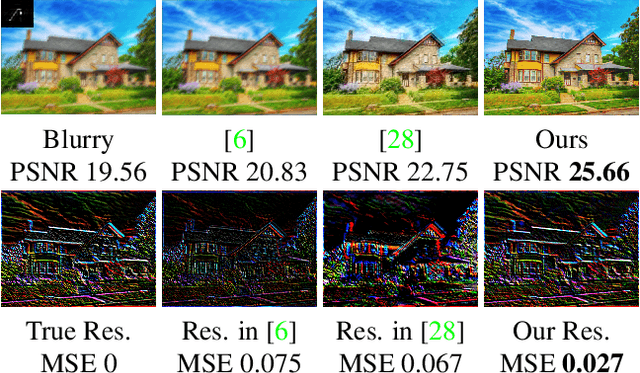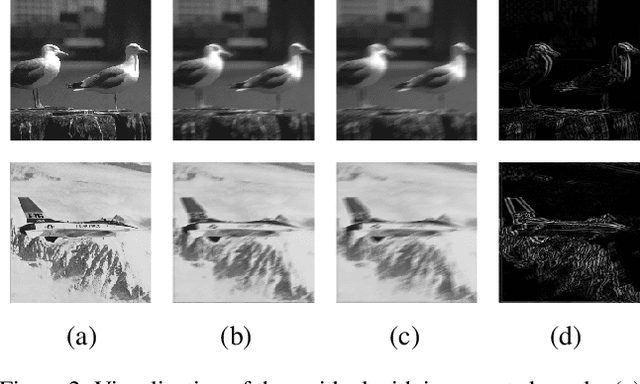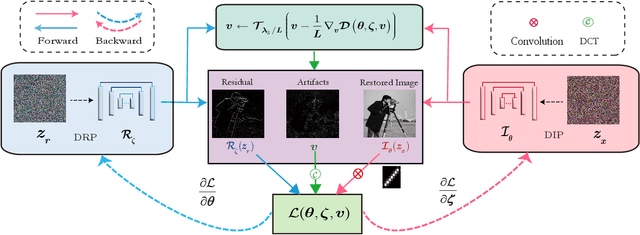Jianli Wang
Under-Sampled High-Dimensional Data Recovery via Symbiotic Multi-Prior Tensor Reconstruction
Apr 08, 2025Abstract:The advancement of sensing technology has driven the widespread application of high-dimensional data. However, issues such as missing entries during acquisition and transmission negatively impact the accuracy of subsequent tasks. Tensor reconstruction aims to recover the underlying complete data from under-sampled observed data by exploring prior information in high-dimensional data. However, due to insufficient exploration, reconstruction methods still face challenges when sampling rate is extremely low. This work proposes a tensor reconstruction method integrating multiple priors to comprehensively exploit the inherent structure of the data. Specifically, the method combines learnable tensor decomposition to enforce low-rank constraints of the reconstructed data, a pre-trained convolutional neural network for smoothing and denoising, and block-matching and 3D filtering regularization to enhance the non-local similarity in the reconstructed data. An alternating direction method of the multipliers algorithm is designed to decompose the resulting optimization problem into three subproblems for efficient resolution. Extensive experiments on color images, hyperspectral images, and grayscale videos datasets demonstrate the superiority of our method in extreme cases as compared with state-of-the-art methods.
Superpixel-informed Implicit Neural Representation for Multi-Dimensional Data
Nov 18, 2024Abstract:Recently, implicit neural representations (INRs) have attracted increasing attention for multi-dimensional data recovery. However, INRs simply map coordinates via a multi-layer perception (MLP) to corresponding values, ignoring the inherent semantic information of the data. To leverage semantic priors from the data, we propose a novel Superpixel-informed INR (S-INR). Specifically, we suggest utilizing generalized superpixel instead of pixel as an alternative basic unit of INR for multi-dimensional data (e.g., images and weather data). The coordinates of generalized superpixels are first fed into exclusive attention-based MLPs, and then the intermediate results interact with a shared dictionary matrix. The elaborately designed modules in S-INR allow us to ingenuously exploit the semantic information within and across generalized superpixels. Extensive experiments on various applications validate the effectiveness and efficacy of our S-INR compared to state-of-the-art INR methods.
H2TF for Hyperspectral Image Denoising: Where Hierarchical Nonlinear Transform Meets Hierarchical Matrix Factorization
Apr 21, 2023Abstract:Recently, tensor singular value decomposition (t-SVD) has emerged as a promising tool for hyperspectral image (HSI) processing. In the t-SVD, there are two key building blocks: (i) the low-rank enhanced transform and (ii) the accompanying low-rank characterization of transformed frontal slices. Previous t-SVD methods mainly focus on the developments of (i), while neglecting the other important aspect, i.e., the exact characterization of transformed frontal slices. In this letter, we exploit the potentiality in both building blocks by leveraging the \underline{\bf H}ierarchical nonlinear transform and the \underline{\bf H}ierarchical matrix factorization to establish a new \underline{\bf T}ensor \underline{\bf F}actorization (termed as H2TF). Compared to shallow counter partners, e.g., low-rank matrix factorization or its convex surrogates, H2TF can better capture complex structures of transformed frontal slices due to its hierarchical modeling abilities. We then suggest the H2TF-based HSI denoising model and develop an alternating direction method of multipliers-based algorithm to address the resultant model. Extensive experiments validate the superiority of our method over state-of-the-art HSI denoising methods.
Uncertainty-Aware Unsupervised Image Deblurring with Deep Priors Guided by Domain Knowledge
Oct 09, 2022



Abstract:Non-blind deblurring methods achieve decent performance under the accurate blur kernel assumption. Since the kernel error is inevitable in practice, ringing artifacts are often introduced by non-blind deblurring. Recently, semi-blind deblurring methods can handle kernel uncertainty by introducing the prior of the kernel (or induced) error. However, how to design a suitable prior for the kernel (or induced) error remains challenging. Hand-crafted prior, incorporating domain knowledge, generally performs well but may lead to poor performance when kernel (or induced) error is complex. Data-driven prior, which excessively depends on the diversity and abundance of training data, is vulnerable to out-of-distribution blurs and images. To address this challenge, we suggest a data-free deep prior for the kernel induced error (termed as residual) expressed by a customized untrained deep neural network, which allows us to flexibly adapt to different blurs and images in real scenarios. By organically integrating the respective strengths of deep priors and hand-crafted priors, we propose an unsupervised semi-blind deblurring model which recovers the latent image from the blurry image and inaccurate blur kernel. To tackle the formulated model, an efficient alternating minimization algorithm is developed. Extensive experiments demonstrate the superiority of the proposed method to both data-driven prior and hand-crafted prior based methods in terms of the image quality and the robustness to the kernel error.
 Add to Chrome
Add to Chrome Add to Firefox
Add to Firefox Add to Edge
Add to Edge